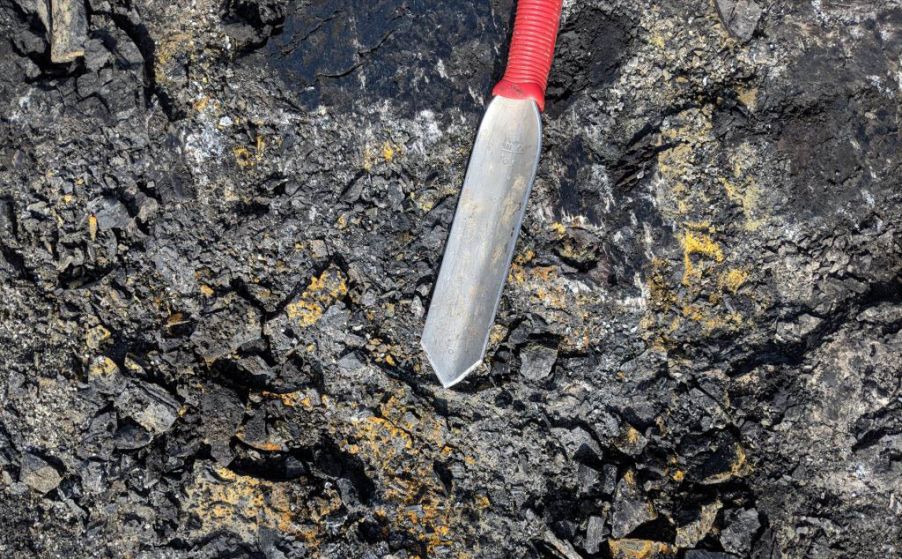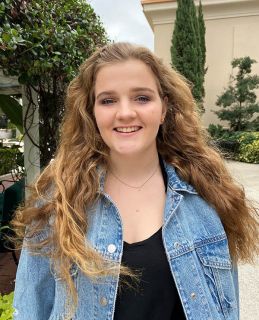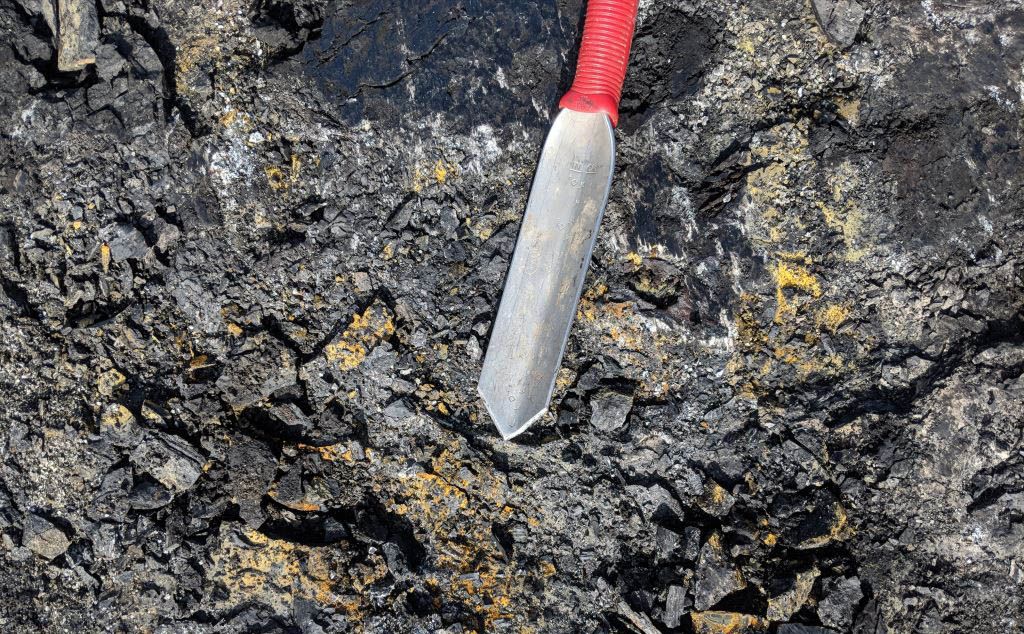As a published author while still a junior in high school, Julia Kagiliery has an impressive resume. One of the youngest authors to be accepted to the prestigious International Journal of Coal Geology, she is conducting real, novel scientific research. We sat down with Julia to learn more about her research and how it brought her on a journey from her home in Florida to the coal mines of North Dakota.
She begins the story, “About a year and a half ago, I took a ‘science-research seminar’ open-study class at my school in Jacksonville, Florida. Students select a general topic, do a literature review, and then design and construct their own experiment to present at local science fairs.”
Julia chose to study the phytoremediation (using plants to destroy contaminants) of soil contaminated with motor oil, so she started by conducting a homegrown experiment. “I made a plastic greenhouse in my backyard and filled it with 50 coastal plants typical to beaches in the southeast to try to mirror the Deepwater Horizon oil spill. I irrigated them with water that contained oil to see if there was a difference in the soils that had plants. I was testing mature plants to see if they would keep growing. Fast-growing trees absorb lead, so applying that logic, I used these plants to draw toxins out of the soil.”
Julia Connects with a Like-Minded Collaborator
During her literature review, she came across a few authors who had written on the subject. She reached out to them by email, but only received a couple of cursory replies. Then she read Dr. David Weindorf’s study on testing soil for crude oil contamination after the Deepwater Horizon oil spill. Dr. Weindorf is the Associate Vice President of the Office of Research & Innovation and Professor and BL Allen Endowed Chair of Pedology of the Department of Plant and Soil Science at Texas Tech University. Dr. Weindorf leads industry research using X-ray fluorescence (XRF) spectroscopy and visible near-infrared (VIS-NIR) technology for soil quantification and analysis. Dr. Weindorf was eager to connect with Julia and address her questions about project design.
Dr. Weindorf had this to say about his collaboration with Julia “As a soil scientist, it has been wonderful to see many more talented women join our profession over the years. I’ve been fortunate to have some outstanding female students come through my program. They’ve produced exceptional science and been leaders in advocating for more women to join STEM fields. As a professor, one of the things we are always seeking is students with genuine scientific curiosity and the drive to investigate their ideas. They pursue these queries not because they are getting a grade in a class or being instructed to do so; rather, these students have a genuine desire to find answers to life’s most pressing questions. Miss Kagiliery is cut from that same fabric of intellectual curiosity.”
Through this connection with Dr. Weindorf, Julia was invited to visit Texas Tech to work with visible infrared spectroscopy. Though it was late in the project, the backyard science experiment got her through to regional- and state-level science fairs.
The Voyage Continues—Next Stop, the Coal Mines of North Dakota
Her innate curiosity for science kept Julia talking to Dr. Weindorf on how to continue working together on this project. They discussed ideas for other possible applications for quantification and analysis using portable X-ray fluorescence (pXRF) and VIS-NIR technology. It hadn’t been tried for coal before. And, this seemed natural progression from the soil.
Dr. Weindorf reached out to his contacts and Julia started a literature review for the next experiment. Six months later they were standing in a mine in North Dakota.
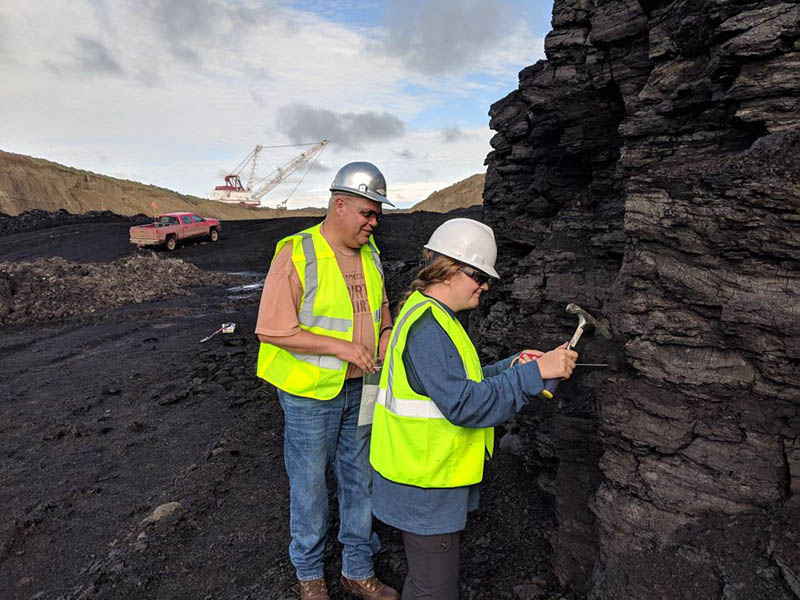
Julia and Dr. Weindorf conducted field sampling and preliminary on-site pXRF scanning at four different lignite coal mines around Bismarck, North Dakota. Photo courtesy David C. Weindorf.
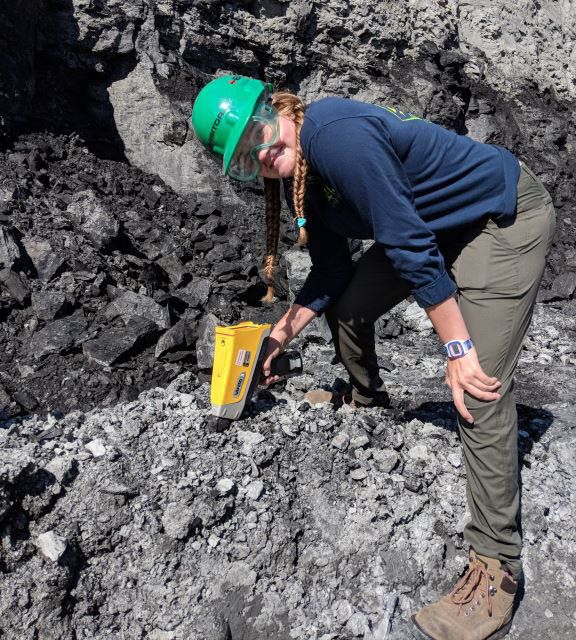
She dried, ground, and processed samples in Dr. Eric Brevik’s lab at Dickinson State University in North Dakota. They sent the samples for laboratory-based dry combustion analysis by Dr. Nic Jelinski at the University of Minnesota. Photo courtesy David C. Weindorf.
Back to the Texas Tech Labs Where the Real “Dirty” Work Begins
Julia then flew to Lubbock, Texas and worked in Dr. Weindorf’s lab at Texas Tech to personally scan all 249 samples collected using pXRF spectrometry (a Vanta™ XRF analyzer), a NixPro optical sensor, and visible near-infrared diffuse reflectance spectrometry (VisNIR DRS). Working with lab tech Cynthia Jordan in an assembly line, they tested 249 samples over two days.
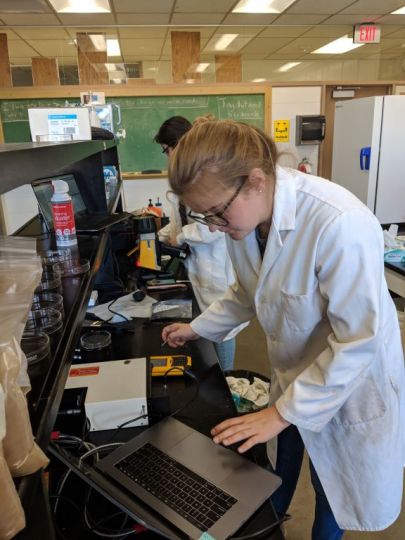 |  |
In the evenings, she worked on literature review and data conditioning. She then worked side by side with statistician and soil scientist Dr. Somsubhra Chakraborty to analyze the data and develop the predictive models. Dr. Chakraborty is an Assistant Professor at the Indian Institute of Technology in Kharagpur, India. Photo courtesy David C. Weindorf.
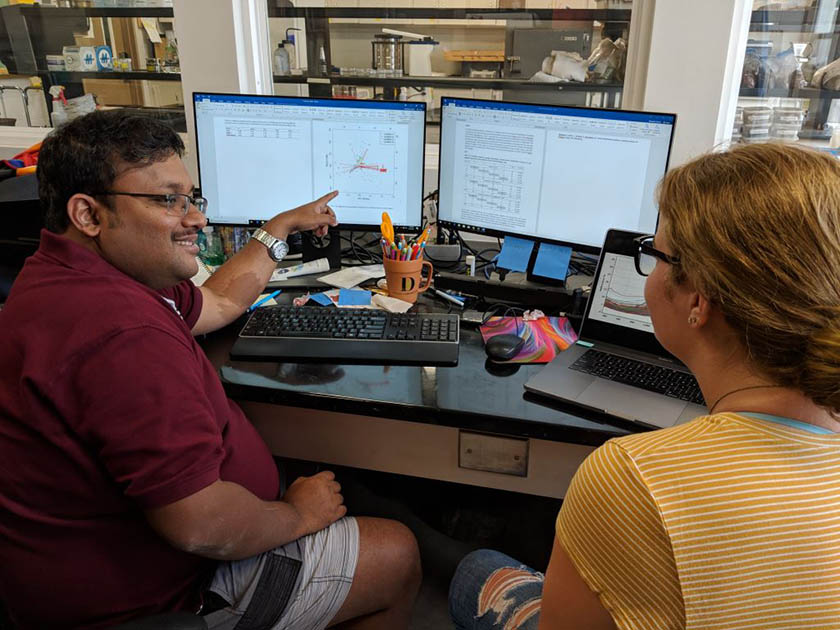
Working with Dr. Chakraborty in Dr. Weindorf’s lab, she began descriptive statistics and modeling the data. The paper was a collaborative effort, written throughout the research process. “It was a great learning experience for me,” says Julia, “I could never have done that without Dr. Weindorf. He was so helpful.” Photo courtesy David C. Weindorf.
A Memorable Seventeenth Birthday Celebration
On Julia’s 17th birthday, she got a call from Dr. Weindorf with the news that their paper was accepted by the International Journal of Coal Geology. She said that learning the paper was accepted by such a selective journal, “was a sweet surprise that was the cherry on top.”
Since her paper was accepted by the journal, it has been a whirlwind. Julia is one of the youngest scientists to be published in the journal, and the first student at her school to have a published paper. She flew to Austin, Texas in early 2020 to present at Olympus’ X-ray technology symposium and then competed in the 58th Junior Science and Humanities Symposium (JSHS) national STEM competition in April. Julia won first place in the oral presentation category, earning a scholarship. She says “It has been an incredible experience. I’m ready to jump in again. It’s an exciting process, and I’m hungry to do more.”
The Genesis of Julia’s Passion for Science
When asked about her interest in science, Julia says that she has known since 5th or 6th grade that she has wanted to follow that career path. She attended an all-girls STEM conference and dreamed of becoming a mechanical engineer and designing rollercoasters. The scientific gene runs in her family, as her grandparent studied analytical engineering, but her biggest inspiration is “great people like Dr. Weindorf.”
Julia says she’s grateful for the support she’s received from Dr. Weindorf, her parents, and her school advisor, “Giving people what they need to succeed has characterized my story. No one doubted me when I wanted to do this study.”
She has some great advice for young women who are interested in STEM, “Your opinion and your thoughts matter. The science you want to do is valid. You deserve to be listened to. Your process and thoughts are important. You are a scientist, and that should come first.” And whenever you are confronted with a challenge, Julia advises, “Be innovative, adapt, roll with it.”
All Evidence Points to A Brilliant Future in STEM
Photo courtesy Anna Kagiliery. | When asked what he thinks about Julia’s achievements, Dr. Weindorf says, “I cannot overstate the enormity of her achievement. At 16, I was mowing lawns and trying to study for my next exam in high school. She just published her first paper in an internationally acclaimed journal. I think what inspired me the most about working with her was her voracious appetite for learning. She conducted an amazing, novel experiment, but along the way she learned about solid experimental design, the logistics of conducting a large experiment, faculty collaboration in science, statistical analyses, manuscript construction/layout, the peer review process for publishing, and presented her research at a scientific research symposium in January. Suffice it to say, she has a brilliant research career ahead of her and I am proud to have her as a scientific colleague. She represents the next great generation of science that will lead our country for years to come.” |
Julia’s paper “Rapid quantification of lignite sulfur content: Combining optical and X-ray approaches” was published in the International Journal of Coal Geology in November 2019. For this extraordinary accomplishment, particularly for a high school student, and hot on the heels of her JSHS win, Olympus wants to congratulate Julia on such impressive achievements. Not only that, we commend her for her role in leading the way and making strides for women in STEM.
*Updated May 6, 2020 to reflect Julia's additional accomplishments since first published.
Related Content
Portable XRF and Coal for Mineral Exploration, Grade Control, Blending & Processing X-Ray
Fluorescence (XRF) Frequently Asked Questions (FAQs)
Get In Touch
